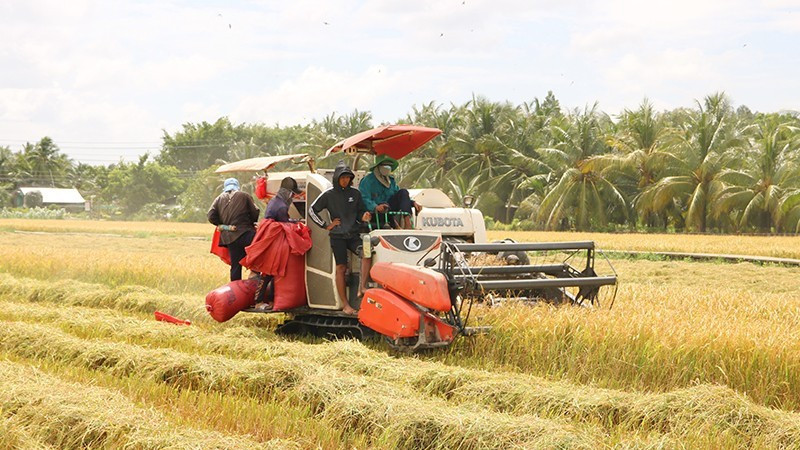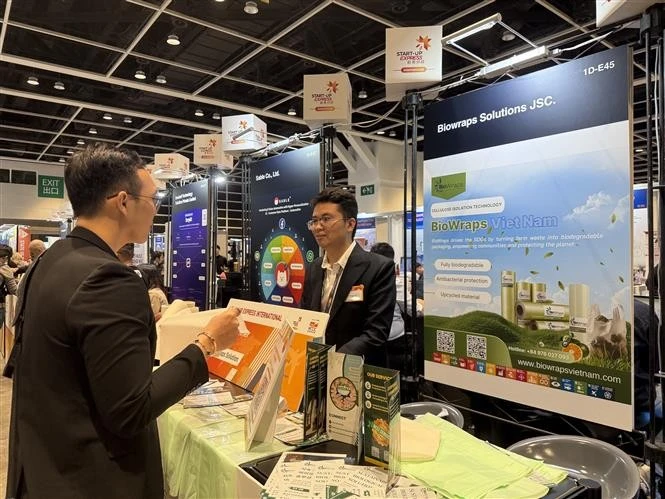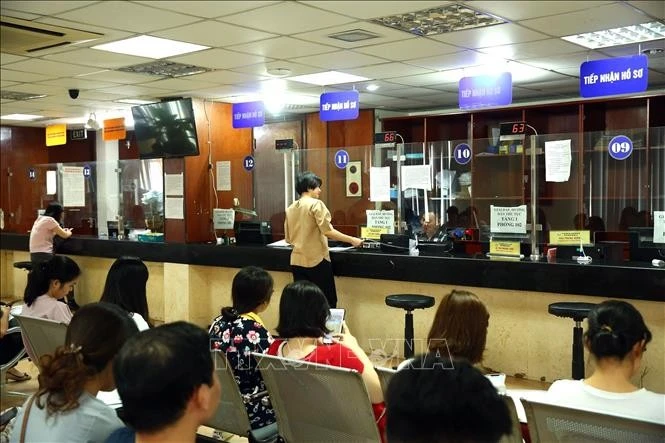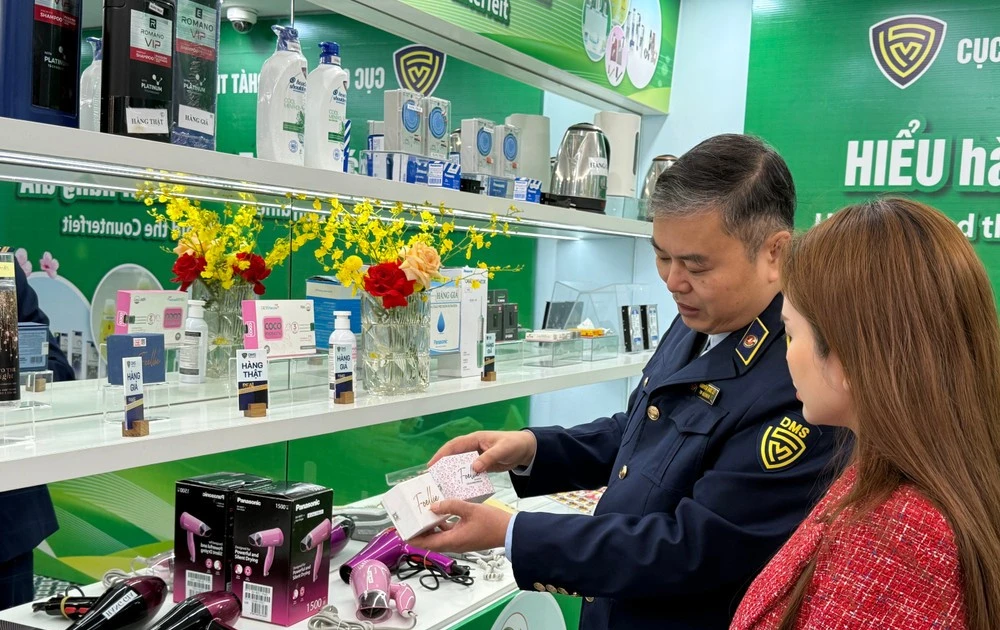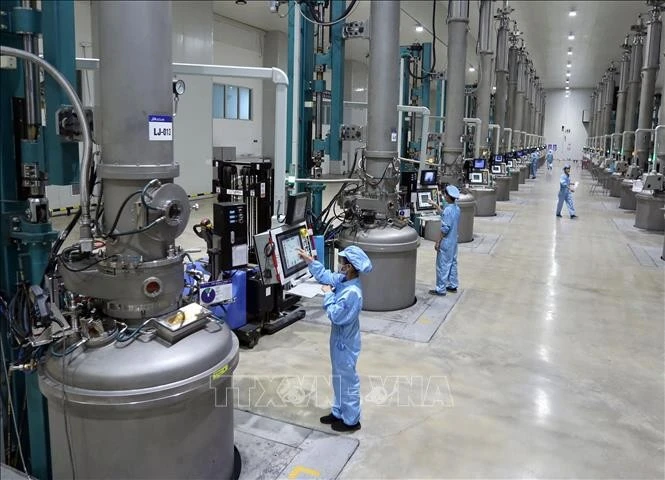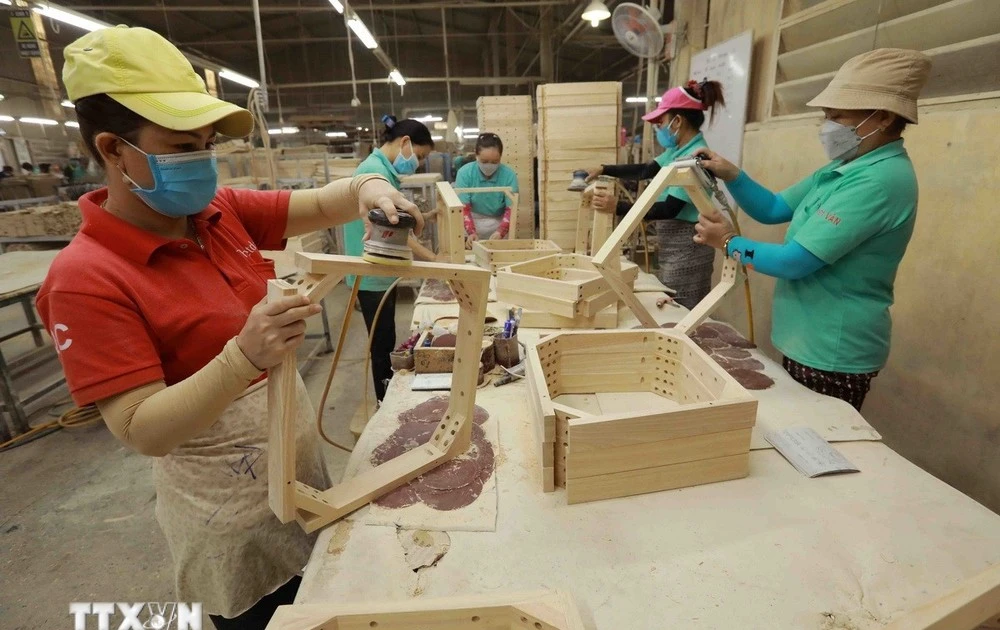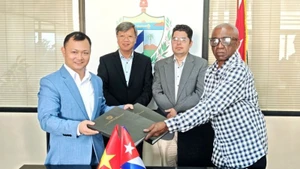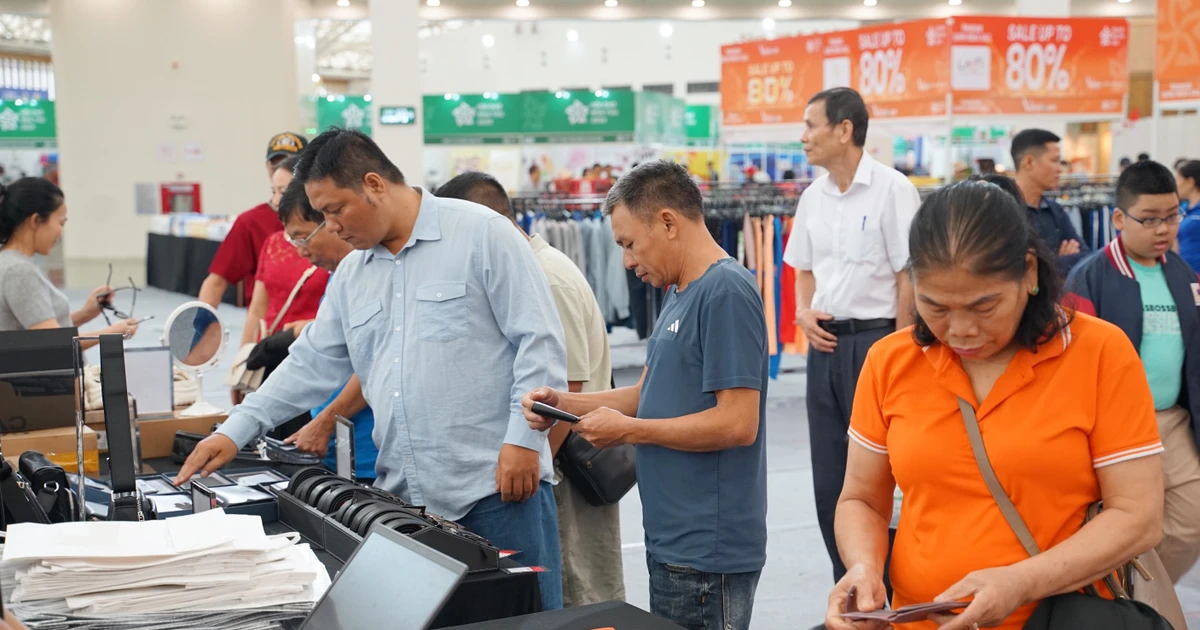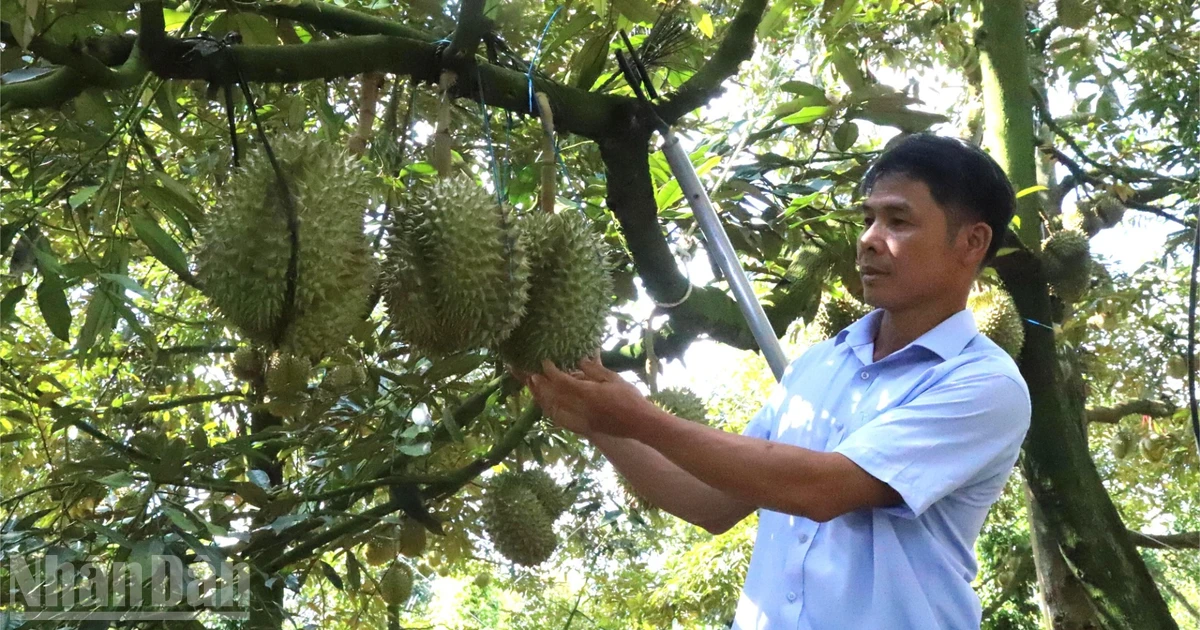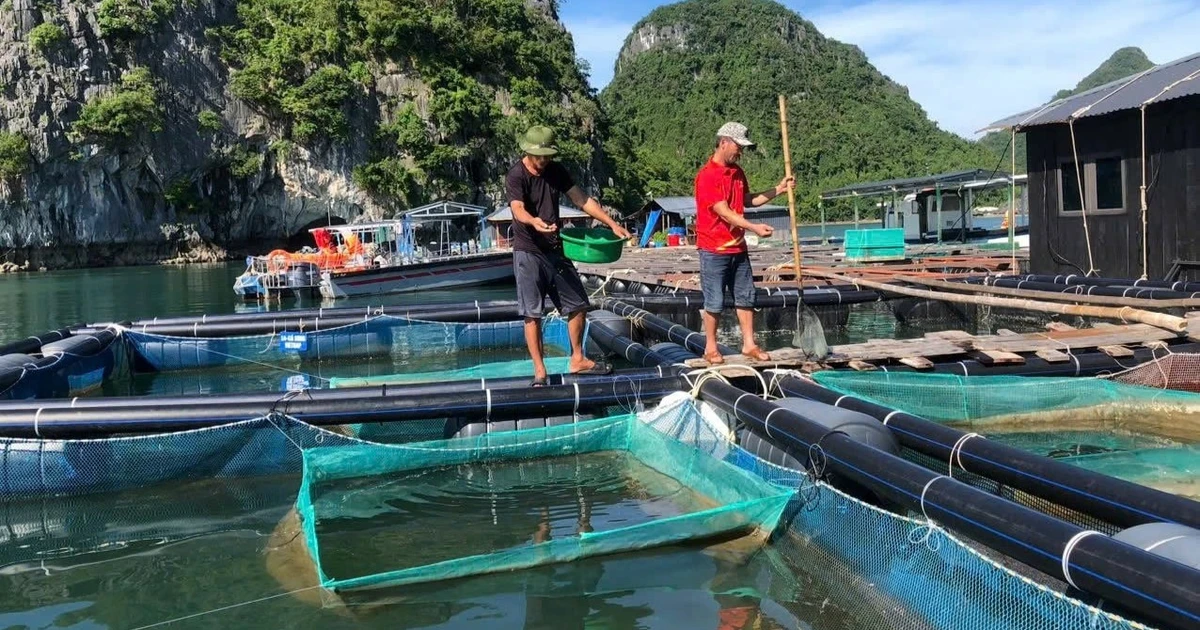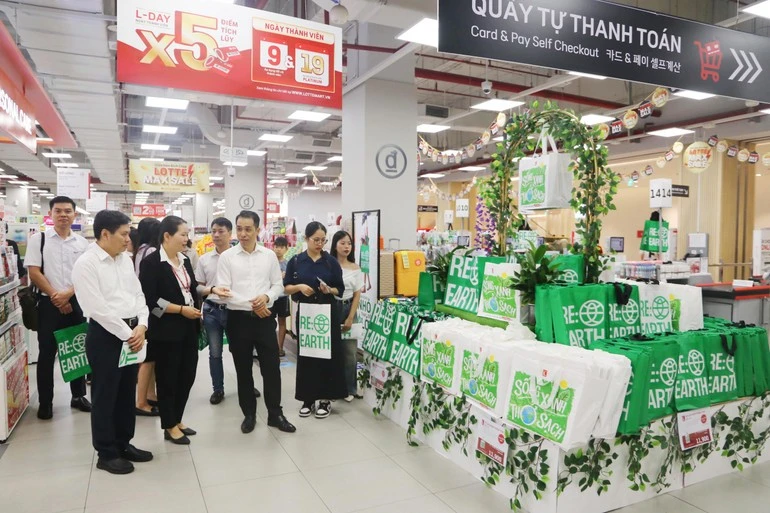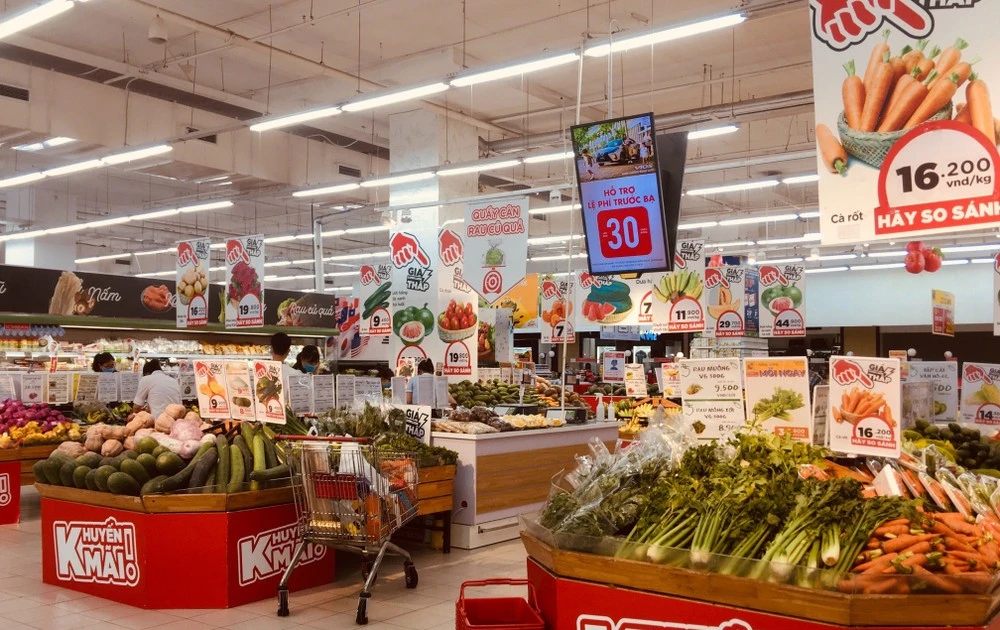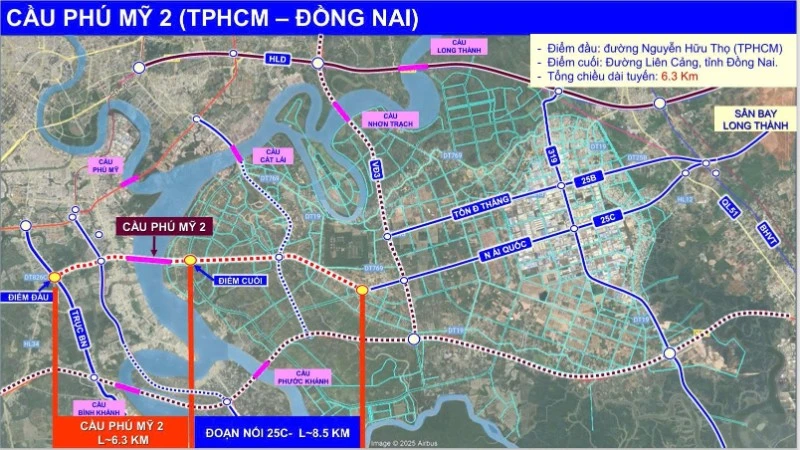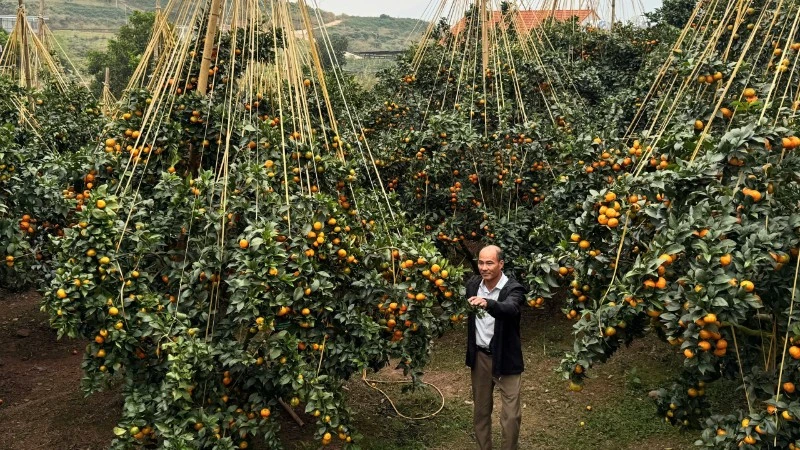These practices contribute to developing a green, environmentally friendly agricultural sector while enhancing local livelihoods.
According to Le Van Dong, Deputy Director of the Vinh Long Department of Agriculture and Environment, in line with the project to develop one million hectares of high-quality, low-emission rice linked to green growth in the Mekong Delta, the province has registered to develop 50,000 hectares by 2025 and 65,000 hectares by 2030.
In 2024, the Ministry of Agriculture and Environment launched two pilot models of high-quality, low-emission rice cultivation at the Phuoc Hao Agricultural Cooperative in Hung My Commune and the Phat Tai Agricultural Cooperative in Chau Thanh Commune, covering an area of 100 hectares. Initial results have shown that these models deliver clear economic and environmental benefits.
According to Phung Duy Truyen, Deputy Director of the Phuoc Hao Agricultural Cooperative, in the 2025 summer-autumn crop, more than 200 cooperative members will continue to cultivate low-emission rice on an area of 200 hectares. The rice products meet VietGAP standards, and the cooperative guarantees the sale of products.
When implementing the low-emission rice model, cooperative members use the ST24 rice variety, which has a growth duration of 105 days, and apply cluster seeding techniques with a seeding rate of about 60 kilogrammes per hectare. This method allows the rice plants to grow in well-ventilated conditions, helping to limit pest and disease outbreaks.
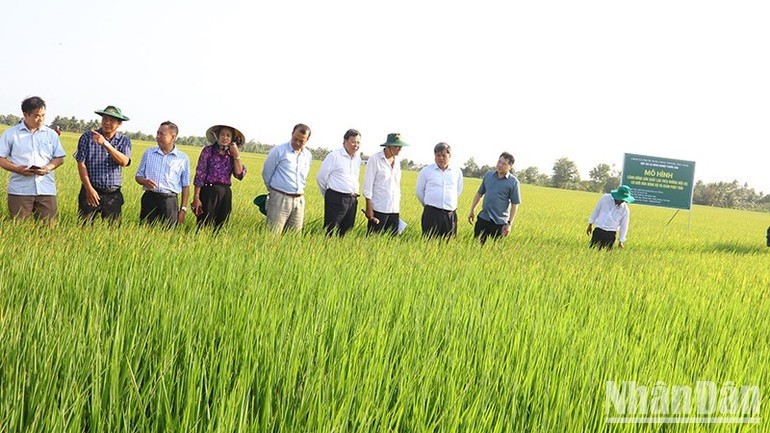
To date, the cooperative has invested in production equipment including rice dryers, combined harvesters, drone sprayers, rice milling machines, and cluster seeders. These machines support the alternate wet and dry cultivation technique, helping to save water and reduce methane emissions.
Over four consecutive crops, the high-quality, low-emission rice models have helped reduce seeding by about 60%, fertiliser use by 20%, and pesticide spraying by at least two times. The average yield has reached 7-8 tonnes per hectare, depending on the crop, with profits increasing by 6-8 million VND per hectare compared with conventional fields.
Mr Huynh Cong Chanh, a member of the Phuoc Hao Agricultural Cooperative, shared: “In the 2025 summer-autumn crop, my family cultivated 1.5 hectares of ST24 rice following the low-emission production process, achieving a yield of 7.5 tonnes per hectare. The cooperative provided seeds, fertilisers, and a purchase contract with a price 500 VND per kilogramme higher than the market. The cooperative’s rice has been recognised by the province as a 3-star OCOP product.”
Thanks to the Tam Phuong irrigation project, the irrigation system in Chau Thanh Commune has been comprehensively upgraded, with canals, in-field channels, and sluices for saltwater intrusion prevention and freshwater supply, ensuring sufficient water for thousands of hectares of farmland. Previously, local farmers cultivated only two rice crops per year with unstable yields, but now 100% of the land can support three crops annually, producing between 5.5 and 8 tonnes per hectare depending on the season.
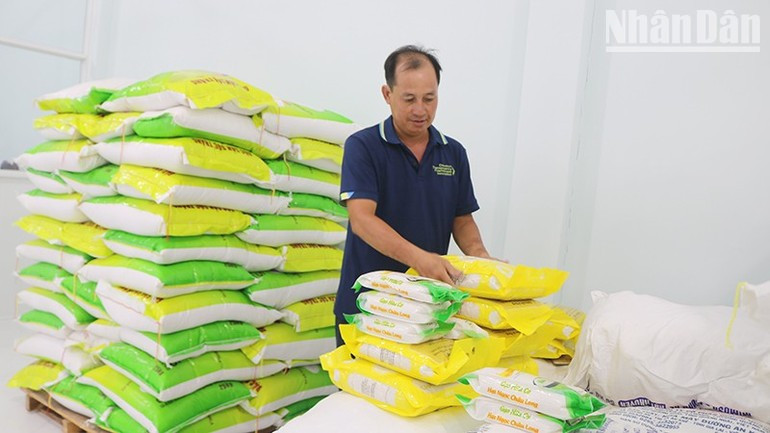
According to Tran Van Chung, Director of the Phat Tai Agricultural Cooperative in Chau Thanh Commune, in recent crops, cooperative members and associated farmers have implemented low-emission rice models on areas ranging from 40 to 200 hectares per season.
The agricultural sector, in coordination with local authorities, has organised training sessions for farmers on cluster seeding, drone-based sowing, alternate wetting and drying irrigation, organic fertiliser use, integrated pest and crop health management, and rice cultivation techniques meeting VietGAP and organic standards.
Thanks to the adoption of advanced cultivation techniques, cooperative members and partner households have achieved average yields of 7-9 tonnes per hectare, with products purchased at prices 1,000 VND per kilogramme higher than the prevailing market rate.
In addition, the Phat Tai Agricultural Cooperative has fully mechanised its low-emission rice production, reducing costs and increasing farmers’ profits. After each harvest, straw balers collect and recycle straw for mushroom cultivation, organic fertiliser production, and livestock feed, helping to protect the environment.
According to Chau Van Hoa, Vice Chairman of the Vinh Long Provincial People’s Committee, low-emission rice cultivation models can be expanded and replicated across the province to promote an efficient, green agricultural sector that adapts to climate change. Cooperatives and production groups play a crucial role in applying scientific and technological advances to reduce greenhouse gas emissions, improve rice quality, and enhance farmers’ incomes.
